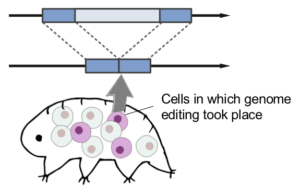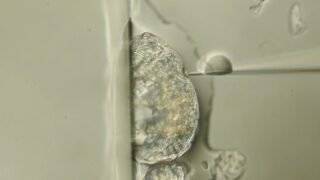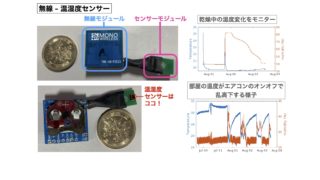Application of CRISPR/Cas9 system and the preferred no-indel end-joining repair in tardigrades

クマムシで CRISPR/Cas9 によるゲノム編集が適用可能であることを示した論文です。 indel の入らない修復が優勢であるなど少し変わった様式も観察されました。クマムシの非ドメイン型タンパク質の機能解明を進めるための強力なツールになることが期待されます。
Tardigrades are small aquatic animals known for the tolerant ability against various extreme stresses. Recent studies identified several tardigrade-unique proteins as protective factors of biomolecules from extreme stresses. Due to the limitation of the technique available in tardigrades, the function of these protective molecules has largely been studied utilizing the systems of in vitro and the heterologous expression in other organisms. Although RNAi is feasible in tardigrades, their effects are variable and not always sufficient. To analyze the functions of the tardigrade protective proteins, in vivo genetic manipulations have been desired. In this study, we used a tardigrade Hypsibius exemplaris as a model whose genome is available, and developed the delivery method of Cas9 ribonucleoproteins (RNPs) to adult tardigrade cells. Cas9 RNPs containing two kinds of crRNAs were injected to the body cavity of adult tardigrades and subjected to the subsequent electroporation to facilitate the incorporation of RNPs to the cells. Using this delivery method, we detected the deletion of the intervening region between two crRNAs from the genome. Intriguingly, all examined joining sites exhibited no incorporation of insertions/deletions (indels), suggesting that no-indel end-joining is dominant repair system in this tardigrade. We also detected similar removal of the intervening region even in the tardigrades injected with Cas9 RNPs without electroporation and in this case the no-indel end-joining is detected in still dominant but not all examined joining sites. This study provides the development of the delivery method of Cas9 RNPs to tardigrade cells and our data also suggested that simultaneous application of more than two crRNAs/gRNAs are recommended to disrupt the target gene by CRISPR/Cas9 system to avoid scarless repair in the tardigrade.
Authors: Hitomi Kumagai, Koyuki Kondo, Takekazu Kunieda
投稿者プロフィール

最新の投稿
 令和6年度(FY2024)2024.06.25Single-step generation of homozygous knockout/knock-in individuals in an extremotolerant parthenogenetic tardigrade using DIPA-CRISPR
令和6年度(FY2024)2024.06.25Single-step generation of homozygous knockout/knock-in individuals in an extremotolerant parthenogenetic tardigrade using DIPA-CRISPR ノンドメインブログ2024.05.25虚心坦懐
ノンドメインブログ2024.05.25虚心坦懐 ノンドメインブログ2023.08.30無線で温湿度情報を飛ばしてクラウドへ
ノンドメインブログ2023.08.30無線で温湿度情報を飛ばしてクラウドへ 令和4年度 (FY2022)2022.09.22Stress-dependent cell stiffening by tardigrade tolerance proteins that reversibly form a filamentous network and gel
令和4年度 (FY2022)2022.09.22Stress-dependent cell stiffening by tardigrade tolerance proteins that reversibly form a filamentous network and gel


